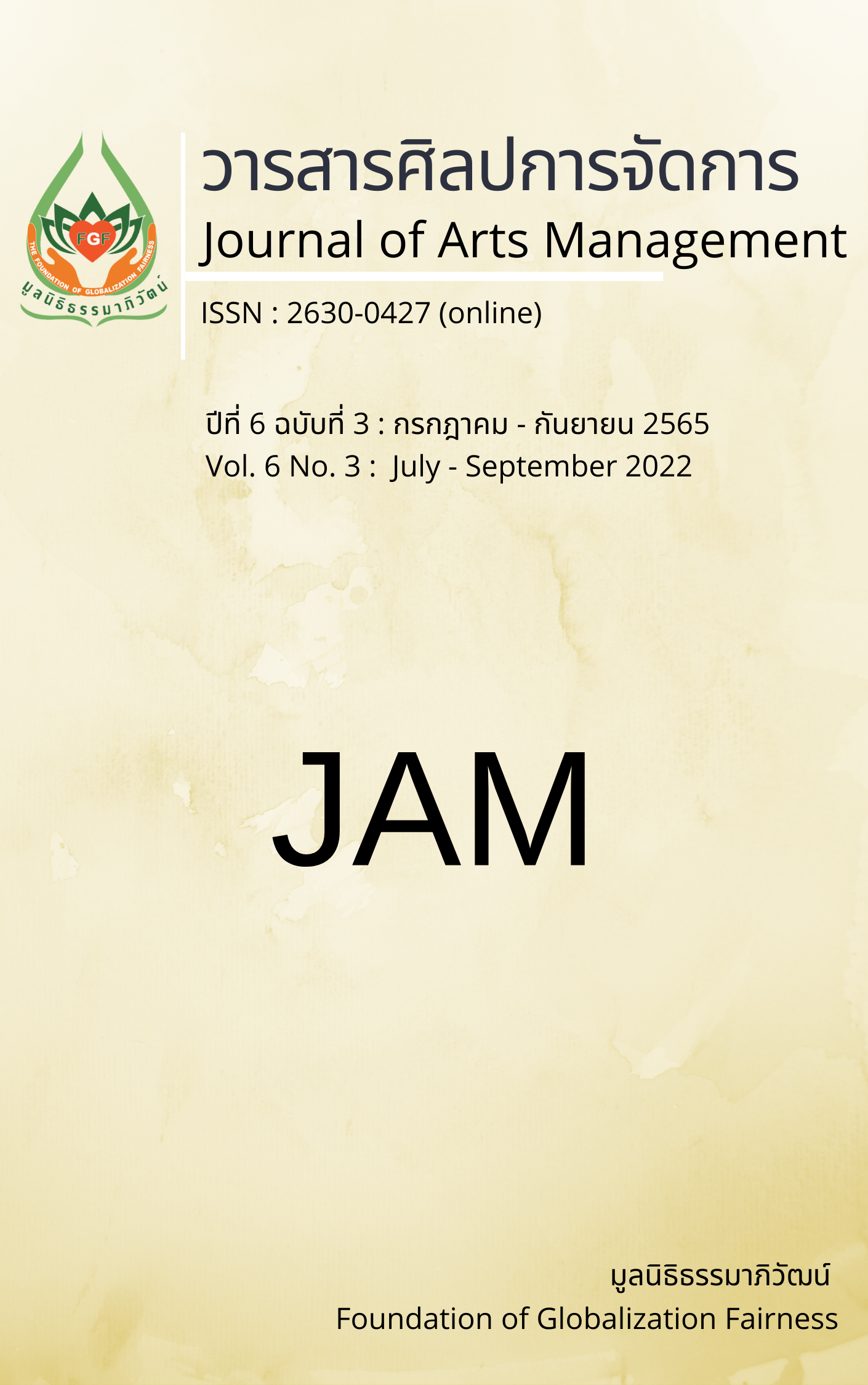Creative Tourism Activities Development for Cultural Conservation of Urak Lawoi Ethnic Group on Lanta Island, Krabi Province
Main Article Content
Abstract
This research article aimed to analyze tourism resources, tourism potential, and the preferences for creative tourism management of the Urak Lawoi ethnic group, study the preferences of tourists for creative tourism activities, and develop creative tourism activities for cultural conservation of the Urak Lawoi ethnic group on Lanta Island. The instruments used in this research were semi-structured interviews, tourism resource audit questionnaire, and evaluation form. The data were analyzed using content analysis and descriptive statistics, such as frequency, percentage, mean, and standard deviation. The research results were found as follows: outstanding resources were natural resources, cultural resources, and the Urak Lawoi language. Regarding the potential of the community, the results found that the community strengths of the Toh Balew were preserving culture, traditional-style houses, and easily accessible locations, while the community strengths of the Sang Kha Ou were preserving culture and having community members with tourism experience. The preferences of the Toh Balew community for creative activity management were human resources development, utility improvement, and activities with the traditional way of life, while the Sang Kha Ou community required area improvement and allotment; establishing a tourism management group and activities for cultural exchange; the preferences of the tourists for creative tourism activities were various choices of activities; participatory activities related to their way of life and wisdom and having a security system; and the creative tourism activities developed were learning traditional performance, arts and crafts, fishing skills, nature observing, local food cooking, local language and participating in a boat floating festival.
Article Details

This work is licensed under a Creative Commons Attribution-NonCommercial-NoDerivatives 4.0 International License.
Views and opinions appearing in articles in the Journal of Arts of Management It is the responsibility of the author of the article. and does not constitute the view and responsibility of the editorial team I agree that the article is copyright of the Arts and Management Journal.
References
Bank of Thailand. (2020). How to manage risks in tourism. https://www.bot.or.th/Thai/ResearchAndPublications/articles/Pages/Article_13Oct2020.aspx
Bumrungsilp, T. (2018). A model of creative tourism for cultural preservation of the ethnic group in Srisaket Province[Doctoral dissertation, University of Phayao].
Chantavanich, S. (2018). Qualitative research (24th ed.). Chulalongkorn University.
Chumchonthai Foundation. (n.d.). Sea Gypsea (Moken, Moklen, Urak Lawoi) of Andaman sea. https://chumchonthai.or.th/data-chaola
Cochran, W. G. (1977). Sampling techniques (3rd ed.). John Wiley & Sons.
Department of Tourism. (2014). Tourism quality standards assessment guide. The War Veterans Organization of Thailand Under Royal Patronage of His majesty the King.
Designated Areas for Sustainable Tourism Administration Public Organization. (2018). Creating creative tourism toolkit. Book Plus.
Elkasrawy, S. (2020). Creative cultural tourism in Egypt: Case study of papyrus and pottery. Journal of Heritage Tourism and Hospitality, 14(1), 215-225. https://doi.org/10.21608/IJHTH.2020.128036
Godfrey, K., & Clarke, J. (2000). The tourism development handbook: a practical approach to planning and marketing. Continuum.
Jittangwattana, B. (2012). Tourist behavior. Fern kha luang.
Jittangwattana, B., & Srikampha, P. (2014). Sustainable tourism development (2nd ed.). Tourism Academic Center of Thailand.
Kruehong, P. (1976). Sea Dyaks (Sea Gypsies) in Thailand. Bannakit Trading.
Kunweechuay, N., & Kunweechuay, M. (2010). Lives and culture of Sea Gypsy “Urak Lawoi” in the Andaman Sea. http://shorturl.at/ajuyF
Maslow, A. H. (1970). Motivation and personality. Harper & Row.
Meetawornkul, S. (2009). Tourism resource management (4th ed.). Sukhothai Thammathirat Open University.
Ministry of Tourism and Sports. (2020). Domestic tourism statistics (classify by region and province 2020). https://www.mots.go.th/more_news_new.php?cid=594
Nuntramas, P., & Rueanthip, K., & Laosumrit, C. (2020). Tourist behaviours in the new normal: the impact of COVID-19. https://shorturl.at/Q0189
Office of The Permanent Secretary, Ministry of Tourism and Sports. (2018). Attitudes and Satisfaction of International Tourists in Thailand 2017. https://secretary.mots.go.th/policy/news_view.php?nid=231
Putjorn, T. (2013). Participatory action research in community-based tourism management for sustainable community development at Salak-Kok, Trat Province[Doctoral dissertation, Silpakorn University]. http://www.sure.su.ac.th/xmlui/handle/123456789/13735
Richards, G., & Raymond, C. (2000). Creative Tourism. ATLAS News, 23, 16-20.
Sooksripaisarn, P. (2016). The current way of life of the Urak Lawoi sea gypsea Sangkha Ou village [Master’s Thesis, Thammasat University].
Srithamasak, N., & Akkapin, S. (2018). The study of foreign tourists’ behavior towards Taling–Chan floating market. Journal of Thai Hospitality and Tourism, 13(1), 27-35.
The Indigenous Peoples' Foundation for Education and Environment. (2018). Urak Lawoy Sea Gypsea. http://iwgia.org/images/publications/new-publications/UrakLawoy_report_Thailand_synthesis_report_Thai.pdf
Tourism Authority of Thailand. (2006). Special interest-based tourism program. Tourism Authority of Thailand.
World Travel & Tourism Council. (2020). THAILAND 2020 ANNUAL RESEARCH: KEY HIGHLIGHTS. https://wttc.org/Research/EconomicImpact/moduleId/704/itemId/219/controller/DownloadRequest/action/QuickDownload


